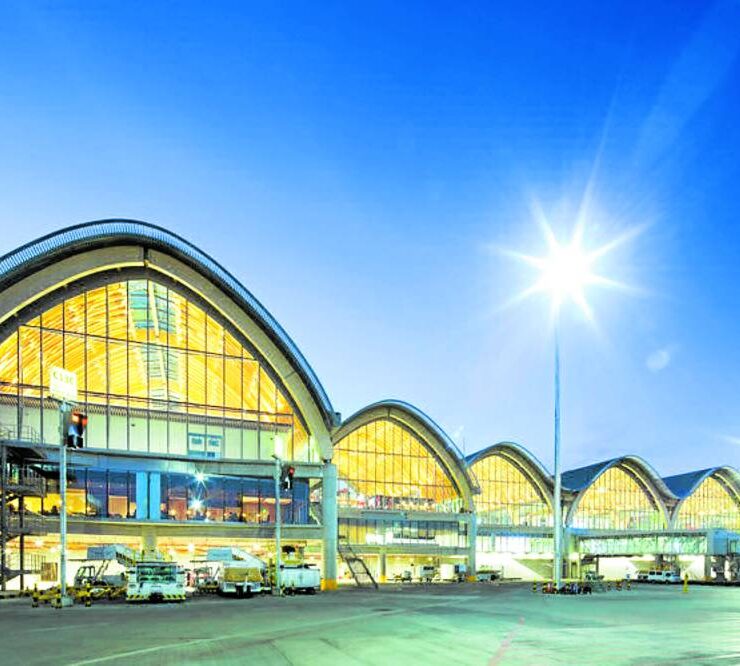Flying soon: PAL’s new flagship carrier
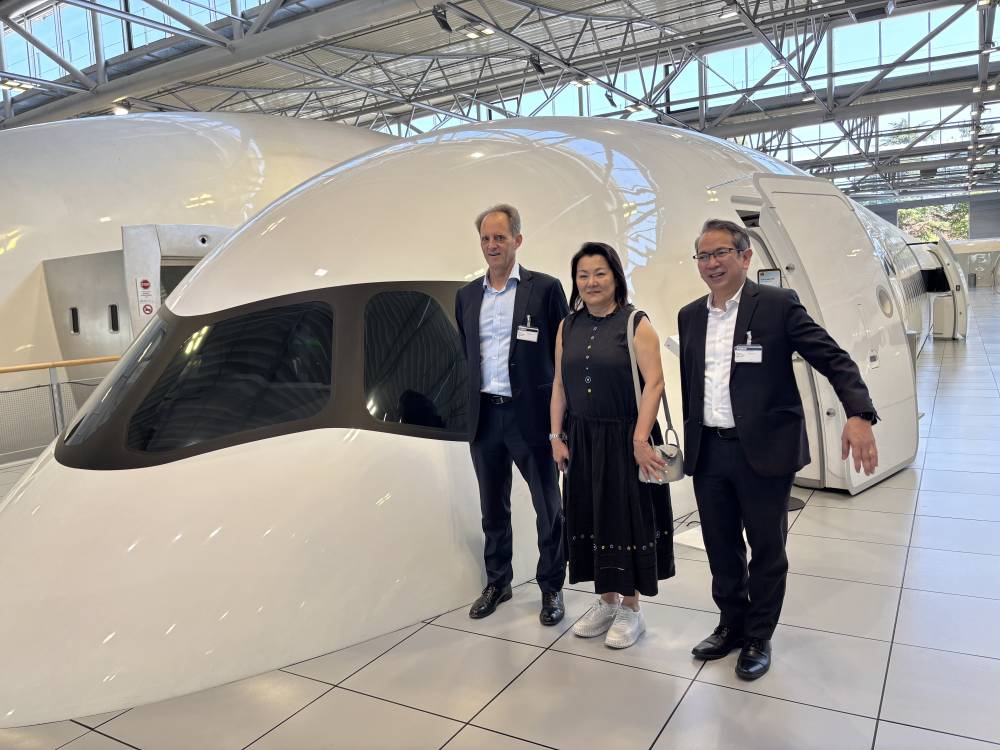
TOULOUSE, France—The future of flying, according to flag carrier Philippine Airlines (PAL), is deploying a fleet of modern aircraft that conserves aviation fuel and elevates the experience of passengers, especially long-haul travelers who always end up jet-lagged across time zones.
To achieve this, Southeast Asia’s pioneering airline is acquiring next-generation long-range aircraft that can connect the Philippines to key economic centers and tourism hot spots across the Pacific and beyond.
The first of its nine Airbus A350-1000 jets, used by many of its global peers to operate the world’s longest routes, is now in production at the Airbus Toulouse facility.
At the Airbus facility here in the quaint pink city of Toulouse, the center of European aeronautics, PAL officials on Friday gave visiting Philippine media a sneak preview of the sleek jet that will anchor its modernization program.
The five main sections of its future flagship aircraft—nose, forward fuselage, center fuselage, rear section and wings—are currently being assembled with allowance for electricity, water and air systems.
These will be shipped to the final assembly line here, where the aircraft will be fitted with advanced onboard systems, ducts and control cables.
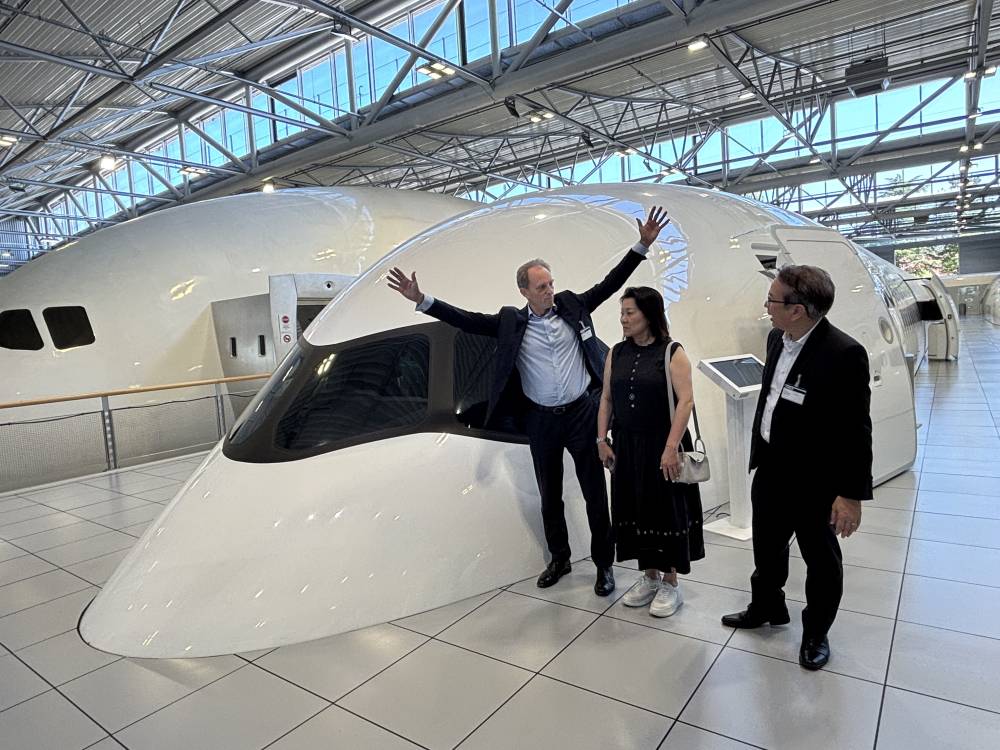
“The A350-1000 is the newest. It is the future. Whether it be the Wi-Fi, the flight entertainment, the seats, the space, it’s lifting things to another level,” PAL president Richard Nuttall tells the media.
PAL is set to take delivery of the first of this next-generation jet before the end of this year. The eight others are slated for production and eventual delivery from 2026 to 2028.
“The fleet game-changer will significantly boost PAL’s passenger capacity and reinforce our commitment to delivering world-class service,” Nuttall adds.
“As you know, Philippine Airlines has journeyed through turbulent times—from the depths of the pandemic and the challenges of a global crisis, through the hard work of restructuring and recovery, and now towards a resurgence,” PAL executive vice president and chief operating officer Carlos Luis Fernandez says.
Through all these, he says PAL’s shareholders made a commitment “to rebuild stronger, smarter and focused on delivering world-class service and sustainable growth for generations to come.”
This strategic investment in new aircraft aims to position PAL as a “benchmark of product quality, service excellence and operational reliability in the region,” he adds.
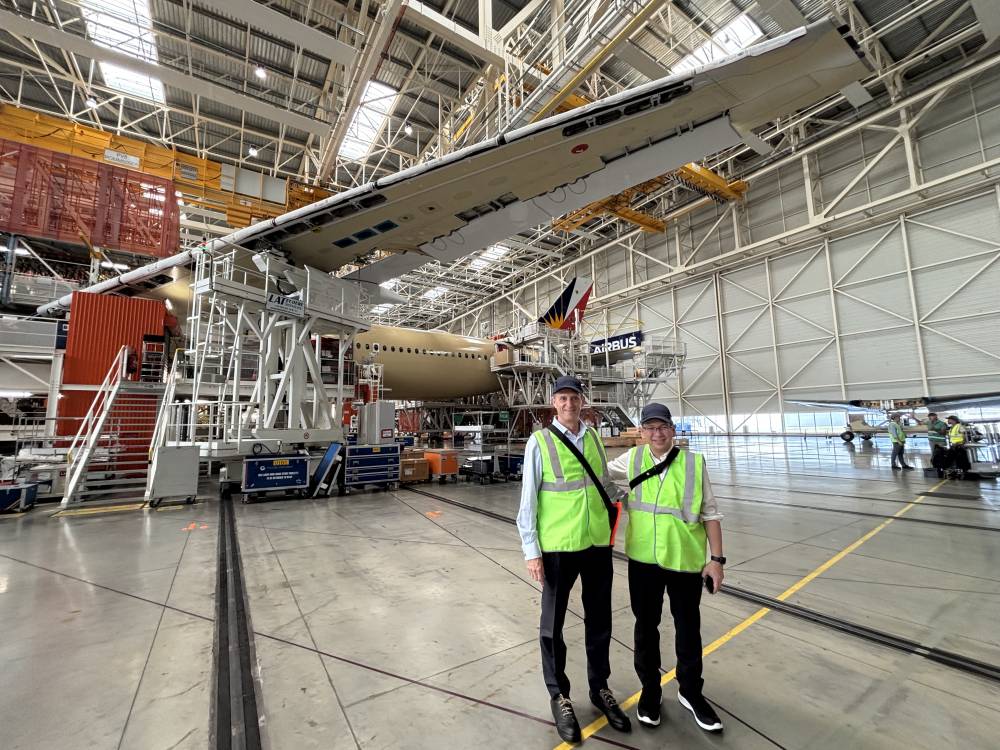
Why the A350-1000
PAL began its transformation with the introduction of Airbus A350-900 in 2018. Today, its A350-900s operate its longest nonstop flights, including polar routes from New York and Toronto to Manila.
The newer Airbus A350-1000s will soon replace the Boeing 777-300ERs that have long been the backbone of PAL’s transpacific operations.
The old fleet has served PAL well since 2009. In 2024 alone, PAL made 3,000 round trips to North America, carrying close to a million passengers.
But competition is getting tougher and tougher. United Airlines, for instance, is challenging PAL’s dominance as nonstop provider of flights to America with the launch of direct flights to San Francisco.
The airline industry is the one industry where players can’t price based on cost, Fernandez explains.
The key is to operate more efficiently and offer better service, he says.
The “game-changing” A350-1000 is seen to open a new chapter in the development of its transpacific long-haul operations. Fitted with Rolls-Royce Trent XWB-97 engines, the aircraft flies with a range of up to 16,100 kilometers (8,700 miles), offering ultra-long-range connectivity with improved fuel efficiency and reduced carbon emissions.
Airbus officials explain that compared with previous generations of aircraft, A350-1000 has 25 percent less fuel burn and carbon emissions.
Air quality is likewise touted to be much better, as air cabin air is refreshed every three to five minutes.
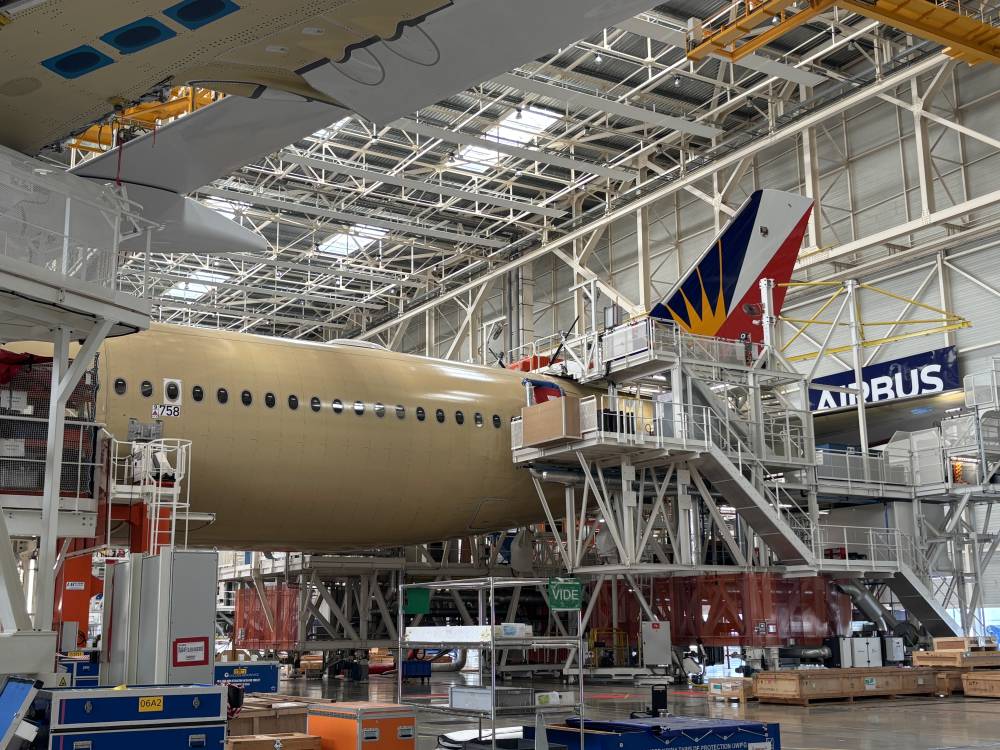
Each A350-1000s can accommodate 382 passengers in a tri-class cabin configuration with distinct cabins allotted for Business Class, Premium Economy and Economy Class travelers.
Fernandez explains that PAL selected A350-1000 because it will provide PAL with the flexibility to balance demand with capacity.
“We plan to put these aircraft in service on our prime routes to the United States and Canada, starting with Los Angeles, San Francisco and Toronto, as well as New York,” he explains.
The A350-1000s configured for PAL will seat 382 passengers, of which 42 are Business Class seats, each with direct aisle access, privacy doors and personal vanity mirrors.
Premium Economy will feature 24 wide recliners in an exclusive cabin, while 316 Economy Class seats will offer generous 6-inch recline, mobile device stands and comfort features.
Likewise touted is the A350-1000’s “exceptionally quiet cabin”—up to four times quieter than other widebody aircraft.
“With higher humidity, lower cabin altitude cleaner air technology and spacious bins and ceilings, these aircraft will deliver a more restful journey, with less jet lag,” Fernandez says.
Cabins will feature mood lighting inspired by the colors of the Philippines, with 22 lighting scenarios—over twice as many as existing aircraft—to enhance comfort throughout the flight.
“We are honored to make it the flagship of a PAL that is battle-tested, ready for the future, and determined to make its mark on global aviation,” Fernandez says.



















